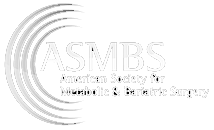Hiatal Hernia
The Condition
Description
A hernia is an abnormal opening in the wall of a tissue, muscle or membrane that holds an organ in place. The stomach lies below the diaphragm. Hiatal hernia is a condition in which part of the stomach slides through the hiatus, an opening in the diaphragm, and protrudes into the chest. Hiatal hernia is a common condition and commonly affects people over 50 years of age.
Hiatal hernia is of two types:
- Sliding hiatal hernia: Most common type of hiatal hernia where the stomach slides in and out of the hiatus.
- Fixed Hiatal hernia (paraesophageal hernia): The stomach moves up into the chest cavity and stays.
Sometimes the hernia may get strangulated, blocking the blood flow to the stomach. This is a medical emergency.
Causes
It is not exactly clear what causes a hiatal hernia. Some of the possible causes may include weakening of the supporting tissues due to an injury, or increased pressure in the abdomen from coughing, vomiting, lifting heavy objects and straining during a bowel movement. The condition may also occur due to a congenital defect where the hiatus is unusually large.
Impact
A small hiatal hernia may not cause any problem, but a more severe one causes gastroesophageal reflux disease (GERD), characterized by heartburn and nausea after meals, which can significantly interrupt your quality of life.
Anatomy
The diaphragm is the muscular sheet that separates the lungs and chest from the abdomen and helps in breathing. The oesophagus or food pipe passes through the diaphragm at the hiatus and opens into the stomach, which is present below the diaphragm.
Symptoms
Hiatal hernia may not have any symptoms. Some of the commonly observed symptoms of hiatal hernia include chest pain, heart burn, belching and difficulty swallowing.
Diagnosis
Your doctor may order the following tests to diagnose hiatal hernia:
- Barium swallow test: involves swallowing a barium preparation, which can be detected through X-rays
- Endoscopy: allows the doctor to examine the inside of your oesophagus and stomach with an instrument called an endoscope, a thin flexible lighted tube
Treatments
Treatment may not be necessary if the patient is not experiencing symptoms. Treatment is usually started when symptoms occur such as in cases of severe heartburn, when the oesophagus gets inflamed due to acid reflux, the hiatus narrows or lungs are inflamed. Your doctor prescribes medications and life style changes to treat heartburn and acid reflux. Surgery is recommended if medications do not work, although it is rare. A hernia repair surgery is usually performed as an open or keyhole (laparoscopic) surgery, where the bulge is pushed back into place, the hiatus is tightened and the stomach is secured into place with sutures.
In open hernia repair, a large incision is made on the chest or abdomen. Laparoscopic hernia surgery is a surgical procedure in which a laparoscope (fibre optic tube with a camera attached) is inserted into the abdomen through a small incision to perform the surgery.
Prognosis
Medical interventions can successfully relieve symptoms of hiatal hernia in the majority of patients. However, symptoms may continue in some patients necessitating surgery to relieve symptoms. Those over 70 years of age undergoing laparoscopic hernia repair are at greater risk of morbidity and mortality.
Untreated
If left untreated, a hiatal hernia can cause complications such as slow bleeding leading to iron deficiency anaemia, lung aspiration and strangulated hernia, where the hernia becomes knotted, cutting off the blood supply to the stomach.
The Treatment
Surgery
When non-invasive methods fail, surgery is recommended. Laparoscopic Nissen fundoplication (LNF) is considered the standard of care for hiatal hernia.
Procedure
Nissen Fundoplication is performed on an outpatient basis under general anesthesia. Your surgeon makes a small incision in the upper abdomen and inserts a tube called a trocar through which the laparoscope is introduced into the abdomen. A harmless gas is injected into the abdominal cavity near the belly button to expand the viewing area of the abdomen, providing a clear view to your surgeon and sufficient room to work. Additional small incisions may be made to insert other surgical instruments.
During the procedure, your surgeon first repairs the hiatal hernia, by bringing your stomach down into your abdominal cavity. Sometimes, a type of mesh may be inserted to support and strengthen it. Your surgeon then wraps the upper part of the stomach, the fundus, around the lower esophagus to create a valve, suturing it in place. This surgery strengthens the muscles and helps prevent stomach acid and food from flowing back into the oesophagus. The laparoscope and other instruments are removed and the gas released. The tiny incisions are closed and covered with small bandages.
Post-operative Information
You may feel soreness around the incision areas. Your surgeon may prescribe pain medicine or non-steroidal anti-inflammatory drugs (NSAIDs) for the first few days to keep you comfortable. If the abdomen was distended with gas, you may experience discomfort in the abdomen, chest, or shoulder area for a couple days while the excess gas is being absorbed.
Contact your doctor immediately if you have a fever, chills, increased pain, bleeding or fluid leakage from the incisions, chest pain, shortness of breath, leg pain or dizziness.
Benefits of this approach
Laparoscopy is much less traumatic to the muscles and soft tissues than the traditional method of surgically opening the abdomen with long incisions (open techniques). In addition, infection risk is less, and patients experience less pain and scarring and a quicker recovery.
Preparation
You may be instructed not to eat or drink anything before the procedure. Your surgeon will give you instructions on the medications you need to avoid. Further investigations may be required prior to surgery to check the level of acid reflux and the movement of the oesophagus.
Outcome
As with any surgery, Nissen fundoplication may involve certain risks and complications which include post-operative fever and infection, injury to blood vessels, injury to stomach or oesophagus, swallowing difficulties, gas embolism, adhesions (extensive scar tissue formation can form in the surgical area) and recurrence of the hiatal hernia. If swallowing difficulties, bloating, belching and flatulence persist after surgery, you may require further corrective surgery.
Post-op stages of recovery and care plan
After the procedure you will be able to leave the hospital in two or three days. You will be given specific instructions with regard to your diet. You are recommended to eat only soft food such as mashed potatoes or soup during the first six weeks after surgery as hard food can get stuck at the surgery site.
Down-time - lifestyle or off work duration
You can resume your regular activities within a week after the surgery. However, complete recovery takes around two to three weeks, during which time, you are advised to avoid hard labour and heavy lifting for three months after surgery.
Costs
Any costs involved will be discussed with you prior to your surgery.



